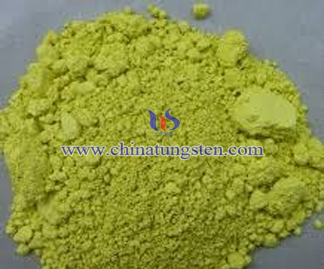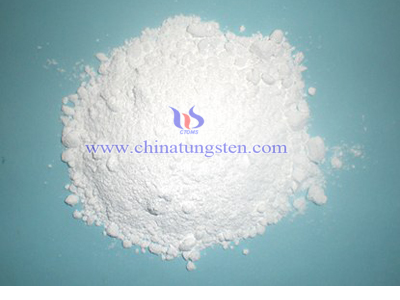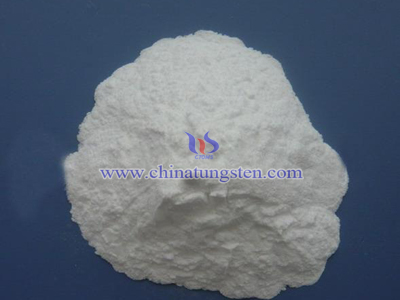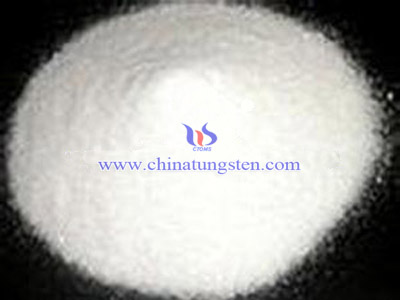WO3 Photocatalyst Degrades Organic Pollutant
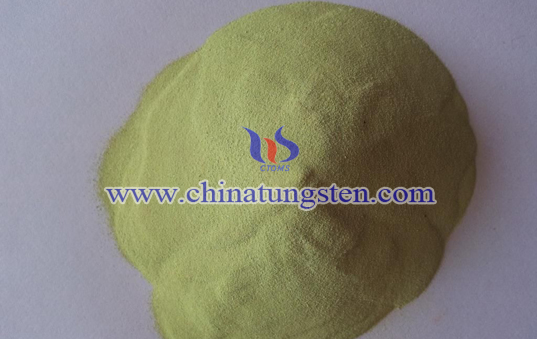
Tungsten trioxide can be used to degrade organic pollutants, air purification, degradation of VOCs, wastewater, dye wastewater, general industrial wastewater, leachate and surface organic pollutants film and other aspects.
Air Purification
There are a lot of researching progress that tungsten trioxide for the application of life, and many interesting inventions. For example, tungsten trioxide photocatalyst paper-based bamboo curtain, tungsten trioxide hollow ball, tungsten trioxide photocatalyst coating, and applied to television backdrop and so on. Uniformly coating the tungsten trioxide photocatalyst on a plate glass or other places, to form the photocatalytic film of transparent and excellent in the film strength after the solvent is evaporated sufficiently, and thus to bring out the photocatalytic effects of air purifier, self-cleaning ect..
Preparing method of tungsten trioxide photocatalyst coating: Metal tungsten by using a certain technique to burn or sublimate, thus to synthesize tungsten trioxide particles with a crystal structure, and then collected by using the ESP method (Electrical Dust Collection), then the tungsten oxide particles is dissolved in an alkaline aqueous solution to form a smaller particles, finally, we obtain a tungsten trioxide photocatalyst coating by adding a binder. In addition, after the combustion of particulates heat treatment, the high and stable photocatalyst can be obtained. It is worth mentioning that the amount of binder will also affect the activity of photocatalyst coating, when it is less than 1%, as the film, its strength is obviously not enough; while, when the amount exceeds 10%, the photocatalytic activity will be reduced.
The principle that photocatalyst removes formaldehyde from building materials is: when exposure to ultraviolet light, the hydroxyl ions on the surface of photocatalyst will be oxidized to the hole "hydroxyl radical" by the electronic holes, the hydroxyl radicals will grab electrons from other organic compounds (formaldehyde and various of volatile organic compounds), and the organic compounds which are taken away electrons will be degraded into smaller molecules (such as carbon dioxide and water ect.) due to the loss of electronic bonding ability. Compare to the formaldehyde remover, the photocatalytic decomposition will not generate subsequent harmful organic compounds, thus to avoid a secondary pollution.
Governance of VOCs
After years of research on governance of VOCs by photocatalytic technology, it has been large-scale used in China industrial waste-gas fields, and to form a series of organic light catalytic exhaust gas purification device in industrial after constantly improved. Studies have shown that the tungsten trioxide photocatalyst is a very effective catalyst on governance of VOCs, because volatile organic compounds will eventually be broken down into harmless carbon dioxide and water by the action of light. Thus, the photocatalyst has strong sterilization, deodorization, mildew, air purification and other functions. In particular, the composite tungsten oxide photocatalyst, such as doped ceria, yttria, due to contamination of other metallic elements, the lattice of tungsten trioxide itself has been changed, the advantageously in combination of the metal complex enhanced photocatalytic activity. However, the doping amount of the metal should not be too much, otherwise it may lower the photocatalytic activity of the photocatalyst.
Papermaking Wastewater Treatment
Free radicals and hydrogen peroxide with highly reactive can oxidize the aldehyde in the wastewater into carboxylic acid; and oxidize the cellulose, lignin, organic acids and other organic matters to CO, H0, N; also it can oxidize the inorganic sodium sulfite, sodium sulfide into sodium sulfite, sodium sulfide, thereby reducing wastewater COD and chromaticity.
The results showed that when using WO 3 / α-Fe 2 O 3 / W as the composite photocatalyst, when the composition ratio is being WO 3: α-FeO 3: W = 75: 24: 1, the COD and color removal rate of the papermaking wastewater are respectively 68.3% and 71.2%. Wastewater after depth treated with photocatalyst meets the national emission standards.
Studies have shown that with the increase of the amount of catalyst, COD and color removal rate increased; however, there is an extreme value when it exceeds the maximum, at first it slowly increased, and then it slow down. The principle is that when the amount of catalyst is too small, it will result in a small number of holes h+ in unit time, and no doubt the reaction rate is very low; while, when the catalyst added in is excessive, a light scattering effect will be produced, thus to reduce the rate of reaction.
Degradation of Dye Wastewater
WO3/CdS/W is a composite semiconductor photocatalyst, researchers used WO 3 / CdS / W for depth treatment of dyeing wastewater; results have showed that under the optimal conditions and illumination for 10 hours, the COD and color removal rate of printing and dyeing wastewater reached to 69.8% and 71.0%, respectively. Its optimum conditions are: mass ratio of composite photocatalyst consisting of m (WO 3): m (CdS): m (W) is 60: 39: 1, pH value of the test solution is 6.5 and illumination for 10 hours.
Tungsten trioxide-graphene photocatalyst which invented by the Chinese and American scientists can completely degrade Rhodamine B within 15 minutes, which the degradation rate is much faster than that of the single tungsten trioxide and titanium dioxide photocatalyst; Also, developers envision the great potential of this invention to be applied to the dye visible degradation of pollutants.
Because of the porous structure and special composition, the discovered tungsten trioxide - graphene photocatalyst has shown an excellent performance. The tungsten trioxide nano-framework can efficiently absorb the visible light due to multiple reflections in the pores. Also, the generated charges will quickly transfer to the graphene, thus to avoid the charge recombination. In addition, graphene nanosheets exposed on the surface of the photocatalyst, which guarantees the π-π contamination between graphene and dye pollutant, and thus lead to high absorption rate of catalyst material on the substrate. These combined features enhance the degradation of dye pollutants by the photocatalysis.

